Why Saudi Arabia’s Red Sea coast could be the next big luxury tourism destination
Editor’s Note: This CNN Travel series is, or was, sponsored by the country it highlights. CNN retains full editorial control over subject matter, reporting and frequency of the articles and videos within the sponsorship, in compliance with our policy.
Travelers are running out of new places to discover, but there could be one treasure hidden in plain sight.
Saudi Arabia’s Red Sea coast stretches for more than a thousand miles, from the northern border with Jordan in the Gulf of Aqaba to Yemen in the far south.
Much of that, outside of big cities like Jeddah, is undeveloped coastline of turquoise water, offshore islands, pristine beaches and coral reefs.
Now, as part of Saudi’s Vision 2030 plan to diversify the economy, reduce its reliance on oil revenue and implement social reform, a number of ultra-luxury schemes, touted by government-funded developers as the pinnacle of eco-consciousness, are under way on the Red Sea shores.
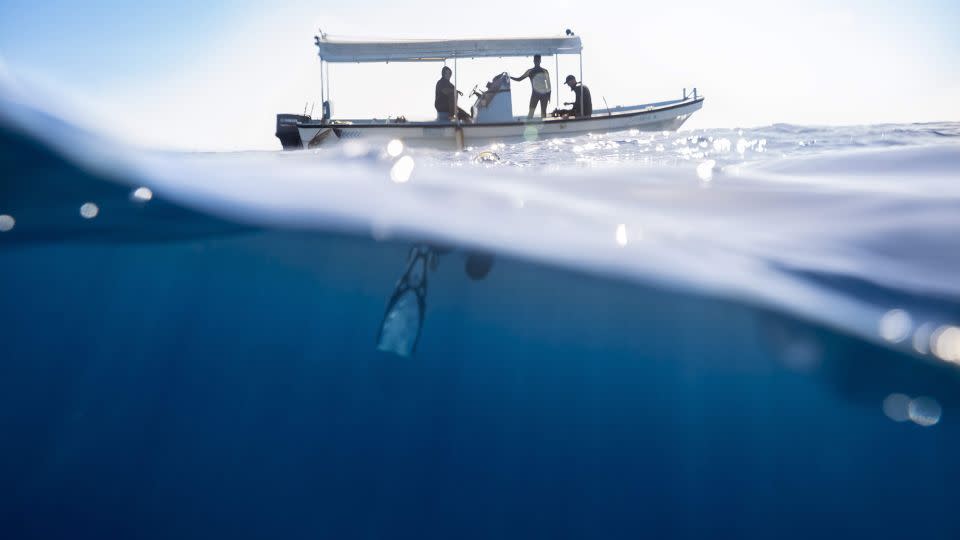
“This is really exciting to see this is opening up to the world,” says Firas Jundi, regional manager of the Middle East for PADI, the Professional Association of Diving Instructors.
“I grew up in Saudi and started diving there in 1989, and then the north was only accessible via four-wheel drives.
“When you get to the shore you see it is pristine, untouched, with clear visibility, like a huge swimming pool full of fish.
“This has not been a diving destination so you can imagine how protected the coral is.”
Many shades of blue
The Red Sea region encompasses 28,000 square kilometers of coastline and 90 offshore islands some 300 miles north of Jeddah, and AMAALA, further north in the Prince Mohammed bin Salman Natural Reserve, are part of Saudi’s so-called giga projects.
They will feature boutique resorts offering a wealth of water sports and other activities including arts, culture and education based around the sea, the desert, the dunes and the mountains, say developers.
Both will be served by the forthcoming Red Sea International Airport which is scheduled to open to domestic flights in 2023.
“When I first came here and went out to the islands and saw about seven shades of blue, I thought, ‘how many shades of blue can you get in the sea?’” says Rosanna Chopra, the executive director of destination development for Red Sea Global, the umbrella development company for the projects, owned by Saudi’s government-controlled Public Investment Fund (PIF).
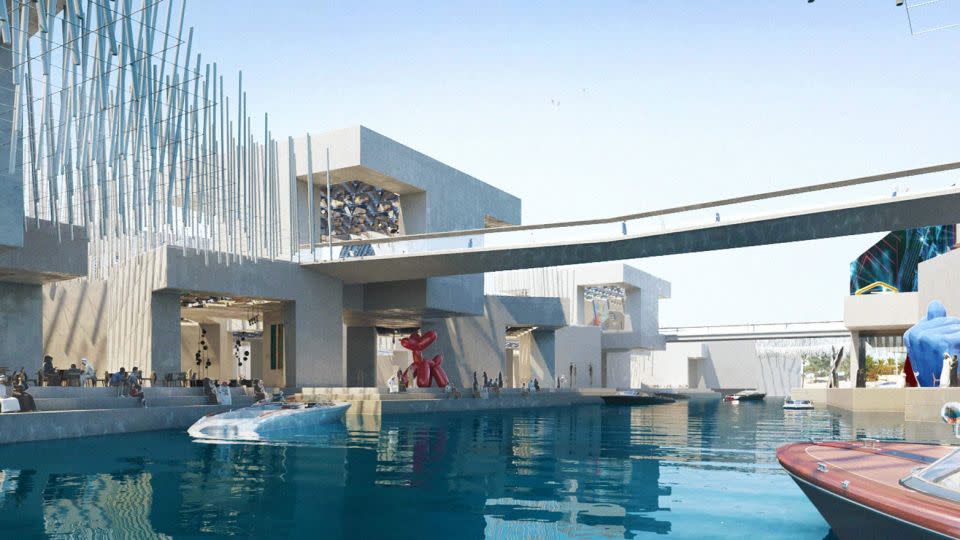
“Even now I think, ‘What on Earth is this glorious place and why has it been such a secret for so long?’
“The islands and the marine life and the dolphins, it’s just like some sort of fantastical world. You become really overwhelmed by the responsibility of trying to preserve it because there is a reason why it’s so stunning and so precious and so beautiful.
“We can’t rush this, we have to do it responsibly, we have to do it well.”
Jundi has dived up and down Saudi’s Red Sea coast and believes the potential for tourism is vast.
“When life stopped during Covid the coral [elsewhere] had a break and now I’ve started diving again I see a lot more marine life, bigger marine animals,” he said.
“That gives you an idea of what it could look like in a place that hasn’t been opened for any kind of activity.
“What’s exciting is they don’t want to rush. They don’t want to be another busy destination like Egypt.
“It’s not just diving, there are so many other nice things in Saudi Arabia that are full of historical sites and deserts. I feel diving is just one tip of the iceberg that Saudi is trying to promote.”
Hyper luxury
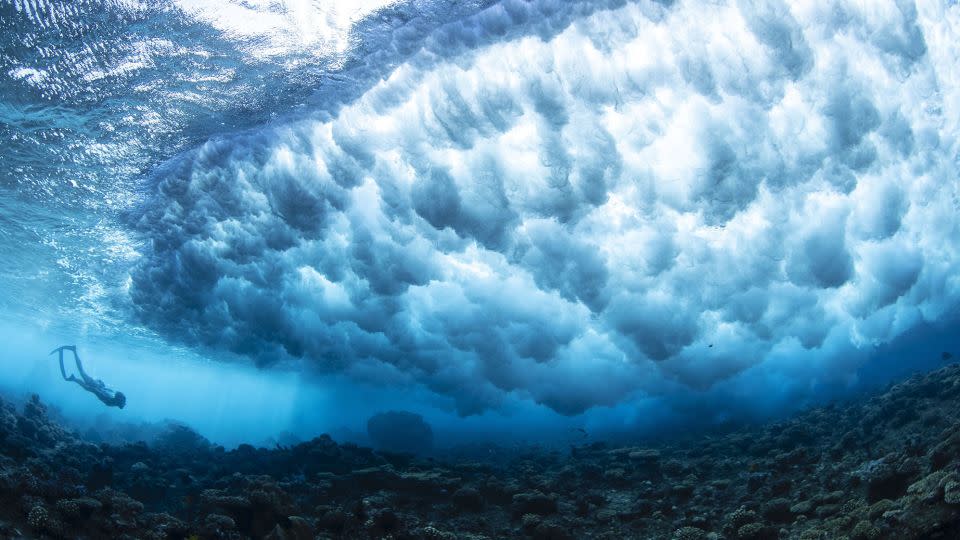
The Red Sea project, between the cities of Umluj and Al-Wajh, will develop 22 of the 90 islands, and will be powered by 100% renewable energy, says the developer. By 2030 it is expected to comprise 50 hotels, 8,000 rooms and up to 1,000 residential properties.
“Regenerative” tourism is the buzzword with the projects aimed at travelling responsibly, preserving and enhancing the local community and environment, and offering transformative experiences for visitors, according to Chopra.
“I think luxury travel is being redefined,” says Chopra.
The sandy slivers of the Ummahat Islands will welcome the first of The Red Sea developments, opening in late 2023. The St. Regis Red Sea Resort will be a water sports hub designed by Japanese architect Kengo Kuma with accommodation in villas on land and over water.
Nujuma, a Ritz-Carlton Reserve on Ummahat, will have a dive center.
Shura Island will be a 30-minute drive from the airport connected by a 1.2-kilometer bridge, and will act as a hub island, featuring 11 low-rise resorts, designed to look like coral washed up on the beach.
There will be a golf course, a marina, shopping and dining.
Two inland resorts, Desert Rock and Southern. Dunes, will make the most of the coast’s natural landscape.
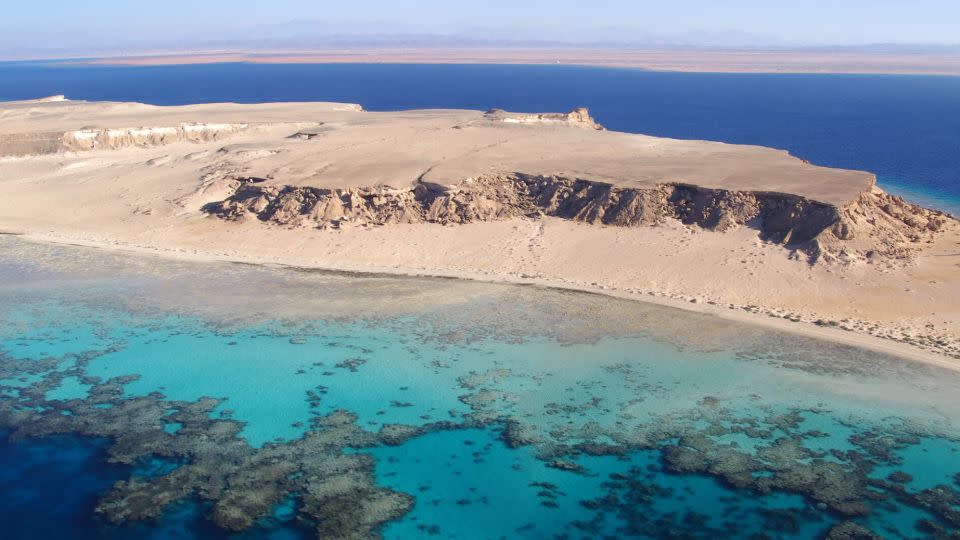
Sheybarah, 45 minutes by boat from the mainland, is being touted by developers as a hyper-luxury, self-sustaining resort featuring a string of over-water pods which architecture firm Killa Design says mirror the bubbles of a diver.
“I challenge anyone not to look at that water and ask the question, ‘how can I go into it, under it, over it?’ - they’re going to want to be a part of it,” says Chopra.
The development at AMAALA will begin with Triple Bay, a wellness “hub” and a center for watersports and other activities.
A marina will cater to the international yachting set and a Marine Life Institute will be both a scientific research center and a tourist destination with 10 zones ranging from augmented reality experiences to underwater walkways, submersibles and night diving.
‘People will be astonished’
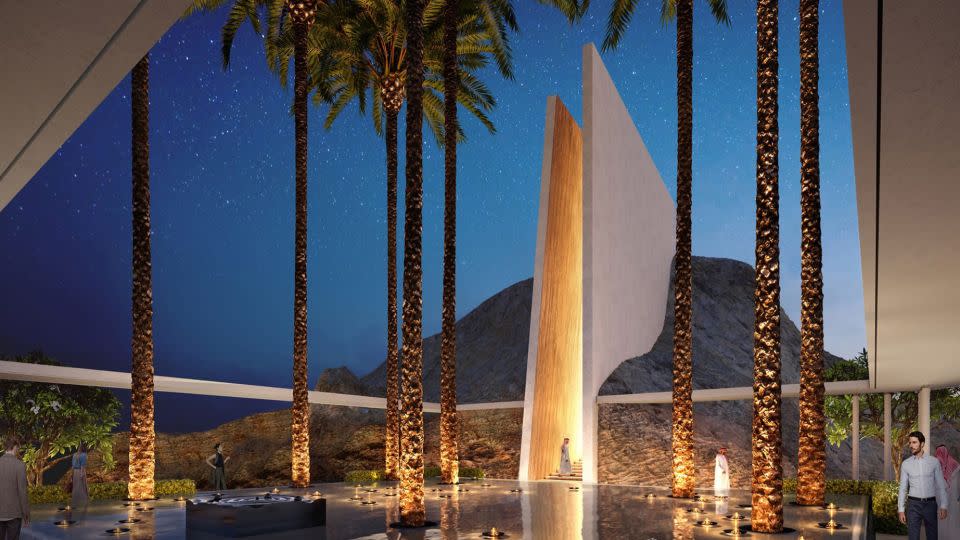
Triple Bay is expected to open in 2024 with a further offshore island and coastal development to come. When complete, AMAALA will offer more than 3,000 hotel rooms across 25 hotels and about 900 villas and apartments, all powered by what developers say is 100% renewable energy and operating with a zero-carbon footprint.
For both The Red Sea and AMAALA, seaplanes, boats and electric vehicles will transfer guests from the new airport to their resort, with luggage checked through to their destination.
“Our job is to open it up intelligently,” says Chopra. “It’s not just learning how to sail or kite surf or foil, but respect for the sea. Mother Nature is bigger than all of us and the more you respect her, the more you enjoy the playground that is the water.
“We want you to leave us having felt you’ve not only contributed to the regeneration of our coral reefs and planet but regenerated as a human and that’s a very difficult thing to manufacture or retrofit into another destination. Being able to explore this area under natural power is going to be a really overwhelming experience for people.”
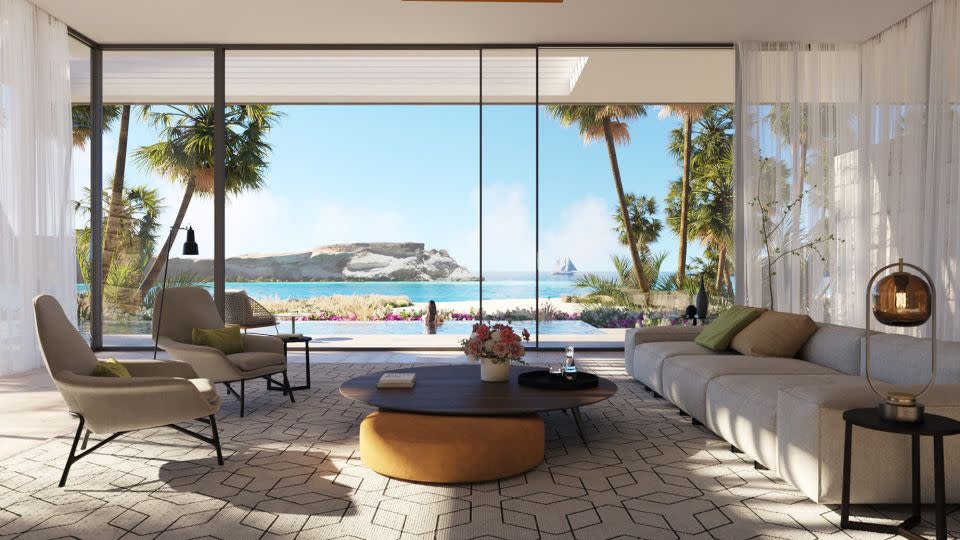
Developers have put a cap of one million visitors a year at The Red Sea and 500,000 at Amaala, but the question is whether that cap will even be necessary. Given Saudi’s human rights record, will tourists even come?
“Absolutely, I do believe tourists will come,” says Jundi, who was born in Syria, but is based in the UAE.
“I travel to Saudi three times a year and you’ll start to feel the diversity that is happening with this new vision.”
Chopra added: “Like many countries that have had periods of time that have been troubling and confusing to other countries, we must all live in a world where people can evolve, and I can’t champion enough the youth of the kingdom.
“People will be astonished when they come. The hospitality of the Saudis will knock them sideways.”
For more CNN news and newsletters create an account at CNN.com

